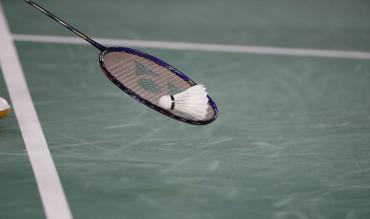Badminton is a sport popular all over the world. Widely played as a hobby in sports halls in the UK, elite-level badminton is also a draw for fans.
It is particularly under the spotlight at the Olympics, where audiences will swell to numbers far greater than the World Championship.
The sport betting interest in badminton piques with the Olympics. This is the pinnacle for badminton players worldwide, a chance to write their names into the annals of the sport’s history.
History
Long before the advent of live betting, badminton was being played across Eurasia. Games similar to badminton have been around for centuries, with the shuttlecock in use in various forms.
The game we now recognise as badminton was developed in the 1800s. The name seems to have originated from the Duke of Beaufort’s Badminton House, though it’s unclear exactly how this came about.
Initially developed by British expats in India in the 19th century, some versions of the sport involved the use of a woollen ball rather than a shuttlecock. After a period of time, they settled on playing either singles or doubles matches.
The sport was ‘officially’ launched in Portsmouth in 1893, with the Badminton Association of England publishing the rules. The All England Open Badminton Championships were first played in 1899 before an England-Ireland Championship match five years later.
The International Badminton Federation, now known as the Badminton World Federation, was founded by England, Scotland, Wales, Denmark, New Zealand, the Netherlands, Ireland, France, and Canada in 1934.
Despite British origins, other nations have been more successful than the UK in major badminton events.
China top the World Championships medal tables in the men’s singles, women’s singles, women’s doubles, and mixed doubles. Indonesia are top of the men’s doubles.
Rules
Badminton matches are played as either singles or doubles. A player will serve into the opposite service box by hitting the shuttlecock below waist height.
In singles matches, the player will take their first serve from the right service box, and will serve on that side on even-numbered points. A player/team retains service until they lose a point.
Points are won if the shuttlecock lands in the opponent’s half of the court (including the court markings/lines).
Points will be conceded if the shuttlecock lands outside the court boundaries, if a player hits the shuttlecock twice, if the shuttlecock goes under the net, or if it hits the net and does not make it to the other side.
Points are also conceded if a player connects with the net with their racket.
Players/teams are only allowed to hit the shuttlecock once to get it over the net. The other team then has one hit to return the shuttlecock. In doubles matches, the two players on the same team cannot hit the shuttlecock to each other.
Players change ends in badminton at the end of the first game. If a third game is required, they will also swap ends at the end of the second game. When one side reaches 11 points in the third game, a final swap of ends is required.
Scoring
All matches are played over a best-of-three games. The first team to win 21 points wins a game, and a point is awarded following every serve. The team that wins the point will serve for the next point.
If the score gets to 20-20, a team needs to win by two clear points to win the game. This continues until 29-29, when the team that wins their 30th point will claim the game.
Court Size & Dimensions
A singles badminton court is 13.41 metres (44 feet) long, and 5.18 metres (17 feet) wide. The court is 6.1 metres (20 feet) wide for doubles matches.
A badminton net should be 1.55 metres (5’1) high at the ends and 1.52 metes (5 feet) high in the middle as it sags slightly.
Every serve has to pass the short service line, which is 1.98 metres (6’5) from the net. A line runs down the middle to split the left and right service courts, along with a doubles service line.
Equipment
The shuttlecock is badminton’s unique ‘ball’. In a cone shape, feathers or a synthetic material are attached to a rubber or cork base. The weight distribution means it flies cork-first.
Shuttlecocks should be between 62 and 70 millimetres long with a weight somewhere in the range of 4.7 grams and 5.5 grams.
Badminton rackets have a handle on a long frame. The racket head is made up of tightly stretched strings. Most rackets are between 665 and 670 millimetres in length, and the majority will be between 80 and 89 grams.
Most Successful Countries at the Olympics
China are by far the most successful country in Olympic badminton. Winners of 47 medals, China have 20 golds.
Indonesia, the second-most successful country, have just 21 total medals, while South Korea (20 medals) are the only other nation with more than nine Olympic badminton medals.
With three golds, a silver, and two bronzes, Indonesia are the most successful nation in men’s doubles while China have the most hardware in men’s singles, women’s singles, women’s doubles, and mixed doubles.
Seven players have won exactly three Olympic medals. Gao Ling has the best medals tally with four, including mixed doubles golds in 2000 and 2004. Lin Dan and Zhang Ning are the only people to win multiple singles golds.
*Credit for the main photo belongs to Alamy*




